Text
Lack of Emergency Shelter to Protect from Violence for Women
Hello all. Today I am exploring what shelter means for women and girls in Canada. It is not hidden that shelters in Canada are packed and are at over capacity. Women especially face gender-based discrimination and violence while experiencing homelessness and the addition of full shelters does not work in favour of them.
With years of waiting to be accepted into supportive housing, and the rate of being turned away in regular shelters leaves little option for women. This is prominent for women especially, and just in 2019, it was reported that 669 women of them along with 236 children were turned away because they were abuse victims (Schwan et al., 2021, p.15). For women trying to escape violence and abuse, many northern reserves do not even have emergency shelters for them to go to. Where can they go now? This only leads to more exposure to violence when women and their children can no longer protect themselves by searching for protection.
Even in communities where gender-based violence is acknowledged as an issue, 70% of the northern reserves have no emergency shelters to will even accept women running from the violence (Schwan et al., 2021, p.15). On top of this, there are no gender-specific emergency shelters in other provinces like Prince Edward Island. When empathizing with women in these situations, I cannot imagine feeling safe resorting to shelters that are co-ed, especially with their accompanying children. With the addition of trauma from domestic violence at the hands of a male, women will avoid those all-gender shelters. However, when scaping violence, 68% of shelters are still co-ed or for men, with only 13% of them designed for women (Schwan et al., 2021, p.14). Within The Pan-Canadian Women’s Housing & Homelessness Survey, many even shared how their type of abuse did not fall into the cookie cutter definition of ‘domestic abuse', leading them to be denied of a spot.
Reflecting on my findings, it is evident that regular shelters have not been designed to make women and children safe. Rather, it only acts as a roof to protect them from environmental dangers and hunger. Safety should be a priority, which is why an initiative like Housing First would benefit those in crisis with the proper support that initially removes the threat of violence. Eligibility is another topic that must be further discussed in Canadian shelter organizations, as denying women due to their domestic abuse and what constitutes it, should not be another barrier for them to access shelter and reach safety. Why are they called shelters if protection isn’t given?

References
Schwan, K., Vaccaro, M., Reid, L., Ali, N., & Baig, K. (2021). The Pan-Canadian Women’s Housing & Homelessness Survey. Toronto, ON: Canadian Observatory on Homelessness.
0 notes
Text
0 notes
Text
Gaps in Mental Health Services for Women in Homelessness
Shame is a feeling that many women felt when they reflected on their lives and came to a realization that their actions had resulted in them becoming homeless, facing criminal offenses, and breaking relationships with their children (Schmidt et al., 2016, p. 5). However, women experiencing homelessness know that was not their fault entirely. Their emotional actions had been caused by an accumulation of the lack of mental health services that they could access.
We often hear about what is needed to assist women experiencing homelessness such as donations and family support. When reading about conversations with real women in these situations to hear about their perspectives, many suggest improvement to specific services and better access to them.
The list below of suggestions for mental health services has come from an article by Schmidt et al (2016) in which women who have experienced homelessness had been interviewed to explore what is needed to assist them in receiving enough and proper support.
Longer in-patient treatment
Acknowledgment of trauma within counseling
Safe services where women did not need to retell their experiences in order to get support
Gender and culture-specific services
A common theme in this blog is the need for more humanity. Women have clearly experienced different treatment depending on the level of compassion and empathy each staff member has. Here, I can see the need for better hiring and training practices to ensure staff is not just having a transactional treatment with their patients, but rather, having a transformational one where work is led with compassion and not stereotypes.
One interesting suggestion made within the article is about the hours of operation within these programs. It is not like support is unneeded after 5 pm. Creating aftercare support programs is one that is critically needed to ensure treatment will not be needed in the future (Schmidt et al., 2016, p. 7).
Rethinking support services and treatment is necessary to help with experiencing homeless improve their mental health states. Asking more questions to those affected directly is the only way to properly reach their needs.
References
Schmidt, R., Hrenchuk, C., Bopp, J., & Poole, N. (2015). Trajectories of women's homelessness in canada's 3 northern territories. International Journal of Circumpolar Health, 74(1), 29778-29778. https://doi.org/10.3402/ijch.v74.29778
Cancel
0 notes
Text
Sexual Violence and Forced Sterilization for Indigenous Women
We all know that marginalized women suffer inequality. Homeless marginalized women arguably suffer more inequality.
If in Canada, “Indigenous people are 5 times more prevalent among the homeless compared with the general population” (Bingham et al., 2019, p. 2), then we can easily surmise that indigenous women are suffering untold barriers to survival.
Keep in mind, even though indigenous people only represent 2.5% of the population they are estimated to be 30% of the Canadian shelter population (Bingham et al., 2019, p. 2). Folks, this is the result of systematic discrimination based on historical events like colonialism.
Now, here comes the clincher. Nothing has been done to address the glaring mental health need deficiency that this population is suffering, as the reasons for their homeless are rarely looked at through a critical lens to see that the homelessness stems from deeper causes such as violence in the home and unsafe living conditions that lead to higher rates of victimization. Particularly, sexual assault, which is found to be 3 times higher than the sexual assault rate of non-indigenous Canadians (Bingham et al., 2019, p. 2). Not being able to ask for help also worsens the situation as all the so-called health services housed in colonial institutions, funded by the government of Canada, have been found to be anything but warm to indigenous populations.
And what about reproductive health services? If yours truly went to the hospital to deliver a baby and informed the doctor that this would be my fourth, would you expect me to come home sterilized? Would you be alright with unilateral decisions made by the doctor to tie your tubes because you’ve had too many children? Wouldn’t that be a violation of the worse kind?
These are the stories of pregnant indigenous women who try to avail medical health services widely available, but non-indigenous women are given the luxury of choice, while indigenous seeking health services only find out later that they have been sterilized.
While this happens to homed indigenous women, the risks of this to homeless women is significantly higher as the medical system unfairly victimized them by removing the need for consent as if they are ill-prepared to make decisions about their own life (Pegoraro, 2014).
So much for free health care in Canada that judges, unilaterally decide, and executes reproductive parts, when you seek health care as an indigenous woman experiencing homelessness. No to mention, the off-handed manner that sexual assaults are investigated and counseling services are denied as if their victimization is less than any other Canadian’s.
If this isn’t systemic, then I don’t know what it is.
References
Bingham, B., Moniruzzaman, A., Patterson, M., Sareen, J., Distasio, J., O'Neil, J., & Somers, J. M. (2019). Gender differences among indigenous canadians experiencing homelessness and mental illness. BMC Psychology, 7(1), 57-57. https://doi.org/10.1186/s40359-019-0331-y
Pegoraro, L. (2015). Second-rate victims: The forced sterilization of indigenous peoples in the USA and canada. Settler Colonial Studies, 5(2), 161-173. https://doi.org/10.1080/2201473X.2014.955947
0 notes
Text
Lack of Sexual Health Services for Women Experiencing Homelessness
When a homeless woman is victimized by sexual assault, her victimization is only just beginning as the systems of so-called justice and social services attempt to provide health to these vulnerable women of no fixed address, but in reality, when have we ever heard of a sexual assault victim being treated right? Especially if she is an indigenous woman.
Health care for issues related to sexual abuse or just sexual health services in general typically comes with the fear of judgment and also a lack of sexual health information. In Canada, the majority of people experiencing homeless who are sexually active are youth (95%) with higher rates of multiple partners who do not use protection (Oliver and Cheff, 2012). Obviously, an intervention must be present to inform youth about sexual health, since they cannot experience these lessons within structures such as high school or university.
If young women do not feel supported in the health care clinic due to their homeless experiences and sexual choices, how can they feel safe to feel comfortable with such vulnerable treatments as PAP and pelvic exams? This just results in untreated infections that have come from inaccessible protection for young women without homes.
Fear of revictimization is something that is extremely prevalent in homeless youth life (Oliver and Cheff, 2012). Being exposed to sexual abuse something makes women, especially youth, not feel comfortable simply being exposed and retelling their trauma.
An important factor I want to discuss around this topic is that sexual health does not just end with sexual diseases and how to face pregnancy while experiencing homelessness. It is also important to speak about any activity that relates to sexuality, whether it is with a partner or with their own self.
For youth, trial and error have been the main system in learning about sexual health. Throughout interviews with homeless youth in Toronto in an article, I learned that they have similar questions about sex that many of my peers have had. This tells me there is a problem society has with talking about sex.
In what world is pretending sexual feelings and experiences do not exist, better than having countless youths going through horrible situations that could have been entirely prevented through education?
Resources
Oliver, V., & Cheff, R. (2012). Sexual health: The role of sexual health services among homeless young women living in toronto, canada. Health Promotion Practice, 13(3), 370-377. https://doi.org/10.1177/1524839912437369
0 notes
Text
Homelessness and Accessibility: Abortion and Alternative Solutions
Thank you for continuing to read this series that focuses on the plight of homeless women in Canada. Like many of you, I often wonder how women experiencing homelessness survive not only the streets of Toronto but also how they navigate the tough life of being a woman, on top of the subsistence-level existence of a person experiencing homelessness.
Specifically, how difficult to receive proper medical attention for reproductive health issues if you are a woman with no fixed address. The statistics are shocking. At any given time, “approximately 13% of women experiencing homelessness are pregnant” (Corey et al., p.1). Luckily, in Canada, many health services are considered to be free, but the question is how do you access them when you are considered to be on the fringes of society? What about if you were Indigenous? How much worse will it get?
The pandemic has made a bad situation even worse. Access to abortion services was already limited for Indigenous women given the barrier to access presented by the sheer distances they have to navigate to get help. I bet the average Canadian does not know that in 7 provinces and territories, there is, “no access to rural abortion services” (Monchalin, 2021, p. 6). This is on top of the financial difficulties that people may experience getting transportation, but that is only if they already know they are pregnant.
How would a homeless woman test for pregnancy, if pregnancy tests come with access barriers such as being able to navigate the health care system and having the money to purchase one? Abortion is even restricted after 12 weeks within some provinces, so what will indigenous women with no access to tests do when they realize have an unintended pregnancy that they would like to terminate? Luckily for people in Ontario, the YWCA Women’s Shelter in Hamilton has extended services to homeless women for abortions, STI testing, PAP testings, IUDs, and more (Haristova, 2021). This is just one step towards breaking down the barriers to safe health care for women experiencing homelessness. In the future, fewer limitations on medical abortions and access to them will lessen the burdens many must carry at all times.
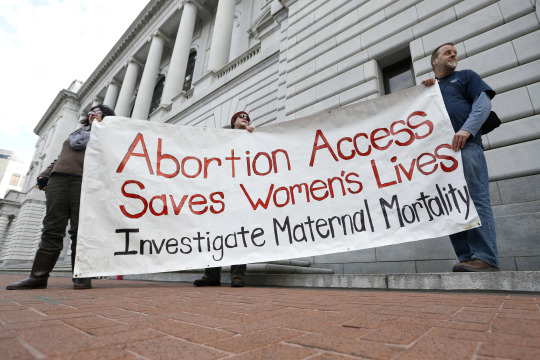
References
Corey, E., Frazin, S., Heywood, S., & Haider, S. (2020). Desire for and barriers to obtaining effective contraception among women experiencing homelessness. Contraception and Reproductive Medicine, 5(1), 12-12. https://doi.org/10.1186/s40834-020-00113-w
Haristova, B. (2021, October 22). YWCA opens weekly midwifery clinic for pregnant, homeless women | CBC news. CBCnews. Retrieved December 11, 2022, from https://www.cbc.ca/news/canada/hamilton/ywca-homeless-pregnant-women-clinic-1.6221039
Monchalin, R. (2021;2020;). Novel coronavirus, access to abortion services, and bridging western and indigenous knowledges in a postpandemic world. Women's Health Issues, 31(1), 5-8. https://doi.org/10.1016/j.whi.2020.10.004
0 notes
Text
Contraceptives vs Tampons: Access to Menstrual Products
There is more access to contraceptives with almost no access to sanitary hygiene products for menstruating homeless women.
Countless women experiencing homelessness face barriers that prevent them from accessing free or affordable necessities such as menstrual products. In trying to explore the barriers and the reasons for them, I also question why certain health products like condoms are provided in abundance without cost when pads or tampons are rationed.
For those in women's shelters, hygiene supplies are scarce according to women who experience life in Toronto shelters (Mathieu, 2017). They are not supplied in necessary amounts; however, condoms are found in bowls full. When there are no free sanitary products at the shelter, access to them in other ways becomes almost impossible as a box of sanitary products monthly can cost more than $12 plus tax.
The taxation of sanitary products is just another issue that should be addressed. For most, this expense is not possible to fulfill. Choosing between food or a pad? Women make do with their own DIY tampons or pad. This can include using washrags, tissue paper, and socks which can ultimately lead to unwanted infections (Boden et al., 2021).
For both women in shelters and those on the streets, asking for menstrual products can be embarrassing, shameful, and uncomfortable. Since there is no abundance, shelter clients must request more from the facilitators. A study of individuals who require menstrual products gave a few testimonies to how their experiences have been with accessing these products, one shared:
“…the humiliation is that you have to keep going back to them and asking them, and when you're asking for, because they have police and security, so it's not private. So you're asking for it in front of NYPD and DHS security, and most of those are male staff. —IDI 07” (Gruer et al., 2021).
Why does this happen? We live in a sexist society where the priorities to make healthcare items widely available, depend on gender. There is a condom campaign in New York where they are extremely accessible and women of all walks of life want that for menstrual products as well (Gruer et al., 2021). After all, you don’t decide to bleed. Pads aren’t luxury items, they are necessities.
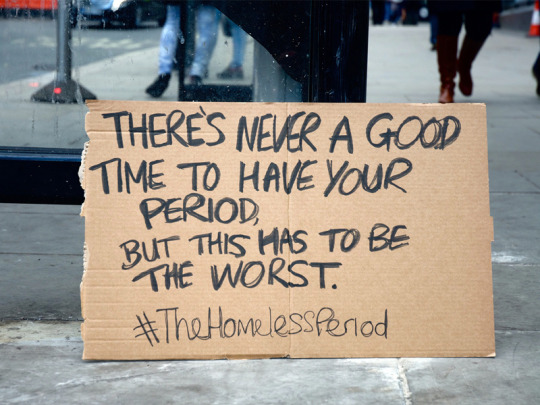
What to do now?
For Ontario, having a rebate on menstrual products is not enough when access to Google is not even possible. Putting free menstrual products in public bathrooms is one step towards making them more available. For shelter donations, ending shame around periods is something that is essential to have more people donate these products. Having the first needed product on the donation list as pads is one idea to increase access.
References
Boden, L., Wolski, A., Rubin, A. S., Oliveira, L. P., & Tyminski, Q. P. (2021). Exploring the barriers and facilitators to menstrual hygiene management for women experiencing homelessness. Journal of Occupational Science, ahead-of-print(ahead-of-print), 1-16. https://doi.org/10.1080/14427591.2021.1944897
Gruer, C., Hopper, K., Smith, R. C., Kelly, E., Maroko, A., & Sommer, M. (2021). Seeking menstrual products: A qualitative exploration of the unmet menstrual needs of individuals experiencing homelessness in new york city. Reproductive Health, 18(1), 77-11. https://doi.org/10.1186/s12978-021-01133-8
Mathieu, Emily. “Periods an Extra Hardship for Homeless Women.” Thestar.com, Toronto Star, 23 Jan. 2017, https://www.thestar.com/news/gta/2017/01/23/periods-an-extra-hardship-for-homeless-women.html.
0 notes
Text
Hidden Homelessness
Hidden homelessness is something that I had no idea about. It was not a term I have heard in social media before.
To learn more about it, Homeless Hub has been a website I often went to, to gain more understanding of the topic.
The image below also shows what homeless looks like to some. It is not just sleeping on the streets or in a shelter.

0 notes
Text
Hidden Homelessness and Violence
Gender plays a crucial role in people's experiences with homelessness. For women, the term ‘hidden homelessness’ is used to describe women who depend on unstable support that is different than shelters or social service-run services (Schwan et al., 2021).
For women and girls, this type of homelessness is most common. Since there are such high levels of discrimination in finding housing for women, they settle for temporary shelter with those who may inflict danger and abuse upon them. Without them visible in mainstream support like shelters, their needs go unseen which only leaves less room for support and more room for abuse.
A reason some women may do this is that finding risky alternatives to shelter is better than living in co-ed facilities or living on the street. (Schwan et al., 2021 pp, 8). This is why access to affordable housing is essential to be able to get women out of dangerous situations and no longer become hidden so that they can receive the health care benefits the government gives to identify people who cannot afford housing in this market.
In order to decrease hidden homelessness, long-term housing initiatives are necessary. Housing First is one that can help women and their children escape dangerous situations first, and then gain support in other realms of their life, regardless of any circumstance they are in (Canadian Mental Health Association, 2020, p.2). This will also allow women to longer be excluded from the health resources the government may supply to those living in poverty or homelessness.
Once women get out of hidden homelessness through Housing First, there’s support available. Not only does housing allow women to get permanent shelter, it also improves overall mental health. Without the constant worry and needs to sacrifice food or accommodation, there has been an increased rate of self-rated health (Canadian Mental Health Association, 2020, p.2).
With Housing First, there are support programs that work hand and hand to help women face and concur with the trauma from violence and abuse while experiencing hidden homelessness. Since there have been so many advantages of this initiative, I would love to see Ontario increase the number of women being helped.
There are answers to solve homelessness, but Ontario’s priorities do not align with helping women succeed.
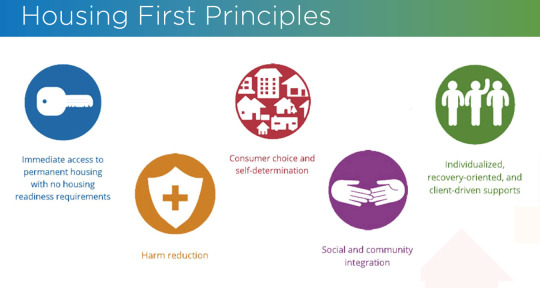
References
CMHA Ontario. (n.d.). Mental health. Housing First: The Path to Recovery. Retrieved December 11, 2022, from https://ontario.cmha.ca/documents/housing-first-the-path-to-recovery/
Schwan, K., Vaccaro, M., Reid, L., Ali, N., & Baig, K. (2021). The Pan-Canadian Women’s
Housing & Homelessness Survey. Toronto, ON: Canadian Observatory on Homelessness.
0 notes
Text
Society Judging and Stigmatizes Women Experiencing Homelessness
Stigma is the culprit of regression.
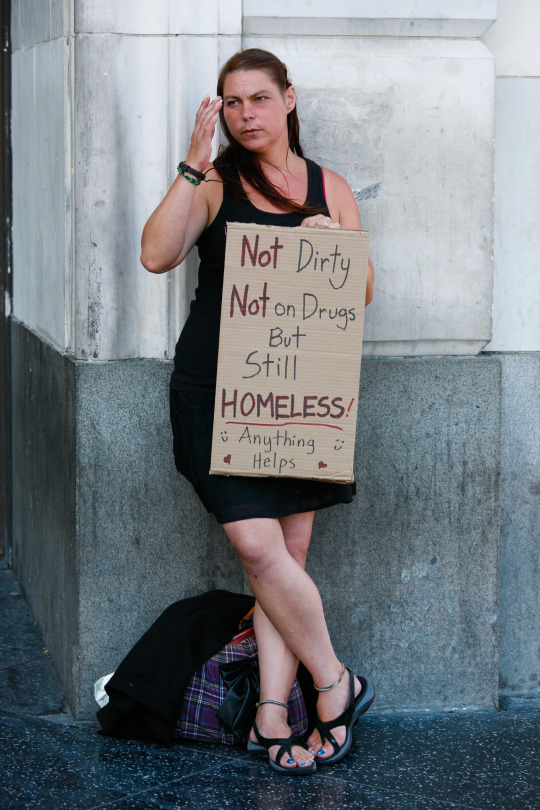
Stigma is what gets in the way of women who are homeless reaching equity in society. They are a lengthy distance away from the definition of what society deems a proper woman, “Bebon, 1996, pp 6). Typically, women are blamed for their situations, even when the world has been against them. Labeled as bad mothers and being synonymous with prostitutes, the stigmatization of women experiencing homelessness has only dehumanized them more especially when they can compare their lives before homelessness to currently living within it.
Being immersed in Yonge-Dunas Square, homelessness is vividly present. As Torontonians, we see the treatment of those experiencing it. Often, they fall victim to being treated as an object, not a human when they face harassment and abuse (Farrugia and Gerrard 2015). For women, social exclusion is another prevalent factor in their lives. Being generalized as dangerous and being “othered” also plays into the barriers to reaching safety and proper health care.
Dehumanization is another feeling many women encounter while being without shelter. There are countless negative perceptions of them that get in the way of receiving proper social service as well. Being rejected from society due to these dangerous perceptions leave people in homelessness with no plan B (Mahlangu and Kgadima, 2021, pp 461).
Not only do civilians respond poorly to women who are homeless, but the treatment from authority and officials make them feel helpless when they are treated like they do not deserve equal rights (Mahlangu and Kgadima, 2021, pp 462). When people are searching for a spot to sleep or looking for donations, they are criminalized and charged with public nuisance (Young & Petty, 2019). Taking a step back, it is difficult to connect with this punishment as there is not given alternate accommodation to find a place to sleep or money for food when most shelters are at maximum capacity.
When I reflect on the quotes from real people experiencing homelessness throughout the article cited above, I cannot help but compare women with homes looking for similar services and communities versus those who do not have one. Using my own sightings, people are far more inclined to help a woman who dropped something on the street and does not appear to be suffering, when the woman who has situated their home on the road would be helped.
Why is there a stigma? Who says that one person is more deserving than another? Why is there more empathy for an established woman with kids who need medical attention than a woman who has no one advocating for her and who is in dire need of someone to listen?
References
Bebon, R. K. (1996). Stigma and homeless women
Farrugia, D., & Gerrard, J. (2016). Academic knowledge and contemporary poverty: The politics of homelessness research. Sociology (Oxford), 50(2), 267-284. https://doi.org/10.1177/0038038514564436
Mahlangu, T., & Kgadima, N. P. (2021). social exclusion and marginalisation of homeless people: A clarion social work call for the spirit of ubuntu to reign. Social Work, 57(4), 443-454. https://doi.org/10.15270/57-4-970
Young, A., & Petty, J. (2019;2018;). On visible homelessness and the micro-aesthetics of public space. Australian & New Zealand Journal of Criminology, 52(4), 444-461. https://doi.org/10.1177/0004865818823945
0 notes
Text
Leading with Humanity: Blog about Women's Experiences with Homelessness and Health Care Services
Welcome to my blog!
My name is Stefania :)
This is where I will share information about women experiencing homelessness and the discrimination they face through health care services. I have done this in hopes that anyone reading this to be able to break down the stigma and get rid of the stereotypes that they associate with women they see suffering through homelessness.
I also hope to make connections between the lack of affordable housing and emergency shelter which can lead to more barriers to receiving proper healthcare.
This blog has been a part of my Homelessness in Canadians Society course (CINT 908) and I am thankful to be learning and applying my knowledge of the course to my blog. I aim to spread information, promote empathy for all, and ultimately encourage those reading to lead with more humanity.
TW for the entire blog: sexual abuse, domestic violence
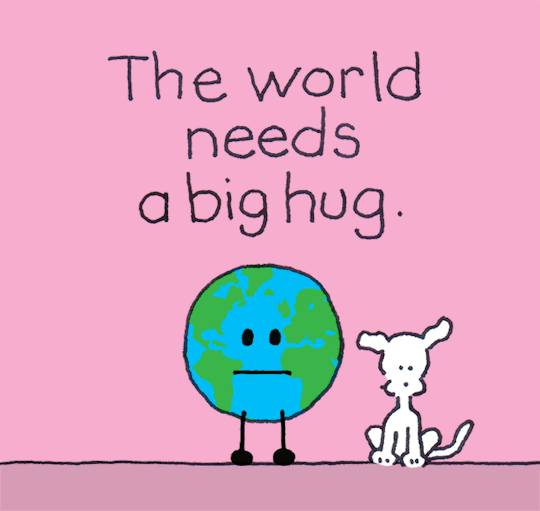
1 note
·
View note